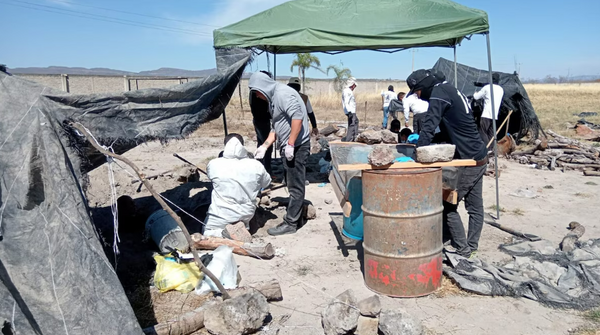
Eight Houthi-controlled governorates in Yemen suffer from severe food insecurity, according to a household survey released this week by the Food and Agriculture Organization of the United Nations (FAO) through the Data in Emergencies Monitoring System.
“Nearly 54 percent of the households experienced hardships due to food shortages and adopted food consumption-based coping strategies,” the alarming survey revealed, adding that families residing in governorates controlled by Houthi militias frequently adopted coping strategies and were eating less preferred foods and limiting portion size at mealtimes.
The survey showed that those families were borrowing money, buying food on credit, selling household assets and reducing health expenses.
“The proportion of households resorting to emergency coping strategies is alarming and has increased from the previous rounds,” the survey said.
In Hodeidah, Al Jawf, Al Mahwit, Amran, Dhamar, Hajjah, Saadah, Sanaa and Taiz, over one-third of the households resorted to emergency coping strategies.
This fourth-round survey reached 2,452 households through computer-assisted telephone interviews (CATI) conducted from 29 March to 30 April 2022. Households were surveyed across all 22 governorates of Yemen.
It said that the Hajjah governorate had a high prevalence of food insecurity, hunger and inadequate diet and that Hodeidah, Al Jawf, Al Mahwit, Amran, Dhamar, Ibb and Sanaa had a high prevalence of food insecurity.
FAO’s collected data revealed that 75 percent of livestock producers reported difficulties, including access to feed at the market (67 percent), animal diseases or deaths (35 percent) and access to pasture (30 percent).
It also said that of the producers selling livestock and livestock products, 66 percent faced difficulties.
As for the most reported difficulty, FAO cited the access to fuel due to its high price.
It said that 93 percent of fishery households reported difficulties with fishery and aquaculture production.
Additionally, nearly 66 percent of the households reported a decrease in income, of which 32 percent reported that the decrease was less than half when compared to the same period in a typical year.
In Abyan, Ad Dali, Aden, Al Bayda, Hodeidah, Al Mahwit, Amran, Dhamar, Haijah, Ibb, Lahj, Raymah and Sanaa city, over 60 percent of the households reported a decrease in income.
Concerning crops, 76 percent of crop producers faced difficulties during crop production. Of those, 59 percent cited insufficient irrigation or rainwater.
Of the crop producers, 37 percent reported a decrease in the area planted, and 55 percent expected a reduced harvest compared to a typical year.
The household hunger scale (HHS) estimated that 38 percent of the households are experiencing moderate to severe hunger.
As per the Household Dietary Diversity Score (HDDS), 43 percent consumed three to four food groups per day, and 22 percent had very low dietary diversity of less than two food groups per day.
The Food Consumption Score (FCS) estimated a 45 percent prevalence of inadequate food consumption (borderline and poor) of which 22 percent experienced poor food consumption.







